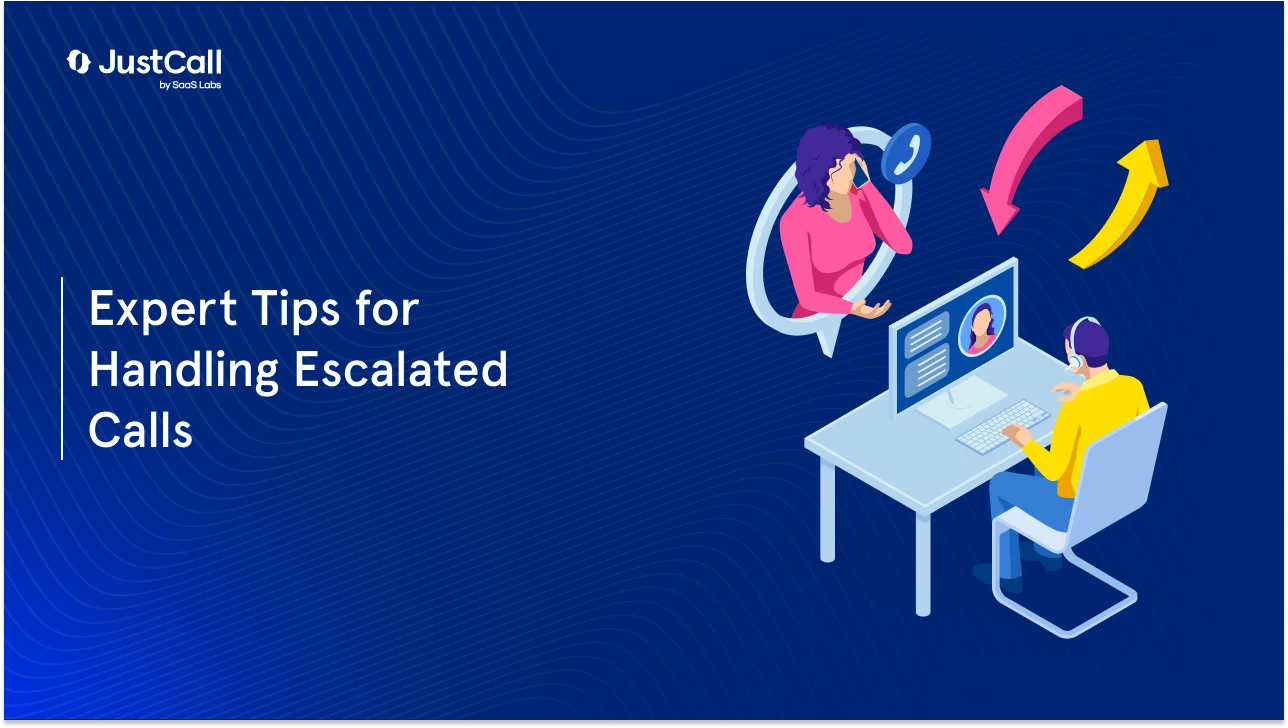A critical component of call center crisis management is call escalation, particularly when the issue is too complex to resolve by a chatbot or a newly joined agent.
However, the call escalation process can have many roadblocks for the customer and the agents themselves. In this guide, we’ll learn about these challenges and how high-priority call routing can help iron out customer experience issues.
Key Problems Within the Call Center Escalation Process
The call escalation process is already a tricky affair. After all, your customers aren’t getting the help they need, which is why the call needs to be escalated to an appropriate agent in the first place. Here are some of the most pressing concerns relating to the escalation call handling process:
1. Prolonged Hold Times: Letting your customer be on hold for an indefinite time period is a frustrating experience. To add salt to injury, if the calls are not escalated efficiently, it can lead to even longer hold periods, causing more irritation. Long hold times and wait times are perceived as the most annoying aspects of a service encounter by close to 60% of customers.
2. Repeatedly Explaining the Issue: Customers often find themselves having to repeat their problem multiple times when calls are transferred between agents/departments. This redundancy in communication can be aggravating for 33% of customers:
3. Limited Empowerment for Frontline Agents: In some cases, the agent may not have the power or authority to resolve the complex issue at hand. Instead, they might have been instructed to escalate the issue. Between looking up call transfer extensions or understanding who to escalate the call to, the query resolution time gets longer and longer. This can make the customers feel unappreciated and unheard (literally) by the brand.
4. Miscommunication Between Escalation Tiers: Poor handoff procedures can lead to miscommunication between agents and departments. Some examples include unfulfilled callbacks or an incontextual and disjointed issue resolution experience. These communication breakdowns can leave customers unsatisfied with the quality of issue resolution.
Deliver 5-Star Customer Experiences With JustCall
Escalation Call Management: 9 Expert-approved Tips & Tricks
If you want to ace escalation call management, you need to demonstrate a balance of accurate communication skills, empathy, and problem-solving capabilities. Here are a few tips to get you started on the right note:
1. Maintain Your Composure: If the conversation becomes heated, continue to speak to the customer respectfully and reassuringly.
Ask: How can I manage my emotions effectively during escalated calls?
2. Try Active Listening: Use active listening to fully understand the customer’s concerns and demonstrate empathy.
Ask: What techniques can I leverage to show customers I’m genuinely engaged and attentive?
3. Acknowledge the Issue and Apologize When Necessary: Acknowledge the customer’s issue with a heartfelt and sincere apology. This goes a long way in diffusing tension and building rapport.
Ask: How can we take responsibility for the errors made by the brand and course-correct?
4. Clarify + Confirm: Clarify the customer’s problem with open-ended questions. The more questions you ask, the better your understanding of their root issue. Try it sometime.
Ask: What type of open-ended questions can I ask customers to get more valuable insights into the customer’s pain points?
5. Set Expectations and Empower the Customer: Always set clear expectations for the next steps. Plus, focus on empowering the customer with choices in resolution to foster a greater sense of control and partnership.
Ask: How can I best explain the resolution process to the customer without sounding repetitive?
6. Stay Solution-Oriented: You want to focus on finding solutions instead of dwelling on problems to ensure your calls stay on the productive track. It is always a good idea to collaborate with the customer to resolve the issue.
Ask: How can I steer the conversation toward finding practical solutions instead of engaging in blame games?
7. Document the Call: Keep thorough and accurate records of the call if you want to continually track progress. This strategy is also useful for sharing information with colleagues and ensuring accountability at all times.
Ask: What data points should I document during the call, and can I use an automation tool to do it?
8. Escalate When Necessary: Knowing when to escalate an issue is important to ensure prompt resolution. There’s no point beating around the bush and wasting the customer’s time.
Ask: How can I ensure a smooth escalation process? Will using an automated tool with real-time screen-sharing abilities help?
9. Follow-Up Promptly: Honor your commitments and follow up within the agreed timeframes to maintain trust with the customer.
Ask: What strategies can I leverage to follow up with customers promptly and meet their expectations?
Leverage Real-Time Sharing to Streamline the On-Call Escalation Process
If you want to streamline the on-call escalation process, don’t simply resort to checking your brand’s knowledge base. Instead, think of investing in a call center solution that provides call escalation features such as high-priority call routing so that your customers can reach the right agent at the right time for quick and quality service.
JustCall’s contact center software enables you to monitor customer calls in real time and drive real-time sharing for a superior customer support experience. All you need to do is whisper or barge into calls or share the screen to navigate customers to the end goal and reduce escalations drastically!











